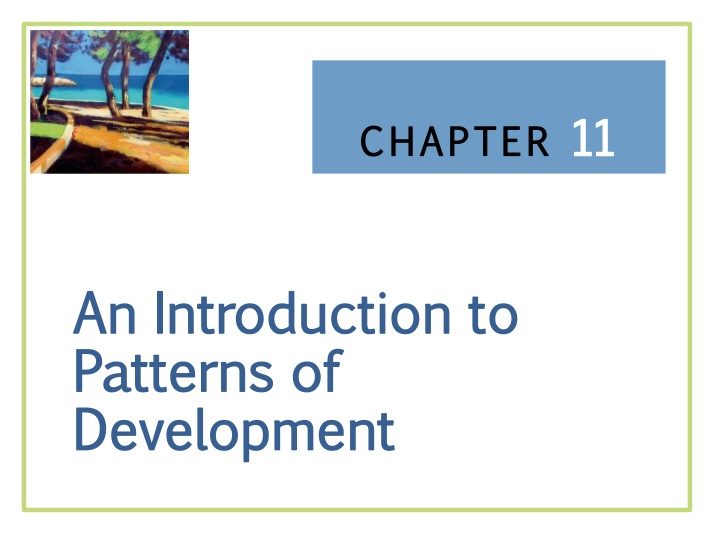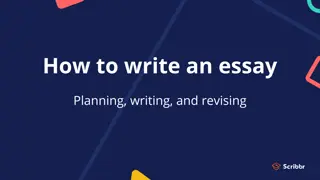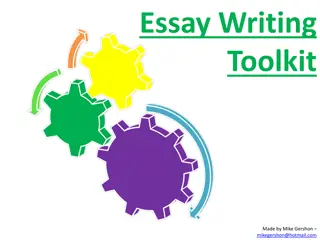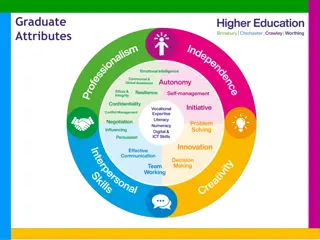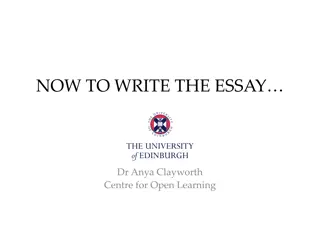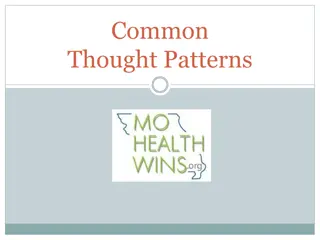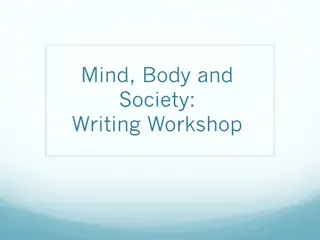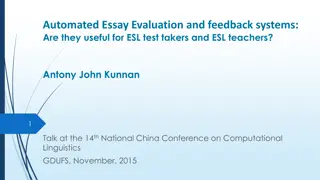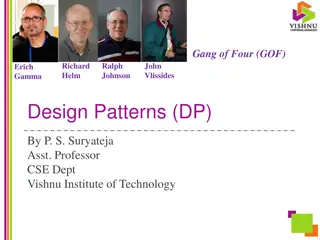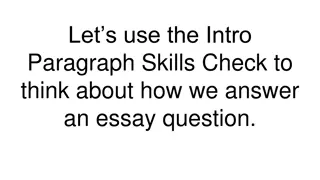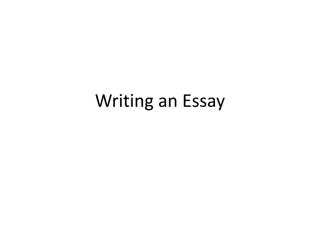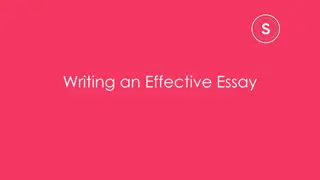An Overview of Patterns of Development and Essay Writing
This content introduces different patterns of development such as narration, description, illustration, process analysis, comparison and contrast, extended definition, cause and effect, and argument. It also discusses how essays can combine these patterns effectively to create engaging and informative writing pieces. Examples and explanations are provided to help understand each pattern's purpose and application.
Uploaded on Feb 15, 2025 | 2 Views
Download Presentation

Please find below an Image/Link to download the presentation.
The content on the website is provided AS IS for your information and personal use only. It may not be sold, licensed, or shared on other websites without obtaining consent from the author.If you encounter any issues during the download, it is possible that the publisher has removed the file from their server.
You are allowed to download the files provided on this website for personal or commercial use, subject to the condition that they are used lawfully. All files are the property of their respective owners.
The content on the website is provided AS IS for your information and personal use only. It may not be sold, licensed, or shared on other websites without obtaining consent from the author.
E N D
Presentation Transcript
CHAPTER 11 11 CHAPTER An Introduction to An Introduction to Patterns of Patterns of Development Development
Contents of Chapter 11 Contents of Chapter 11 An Overview of the Patterns of Development Narration Description Illustration Process Analysis Comparison and Contrast Classification and Division Extended Definition Cause and Effect Argument Writing an Essay that Combines the Patterns of Organization
An Overview of the An Overview of the Patterns of Development Patterns of Development Narration Uses a sequence of events a story to make a point. Use it when you want readers to learn by experiencing a story from your life. Description Uses words that appeal to the sense to paint a picture. Use it when you want to emphasize a sensory experience.
Illustration Uses examples to explain unfamiliar topics, concepts, or terms. Use it when you want to provide specific examples to support your main ideas. Process Analysis Uses step-by-step descriptions to explain how something works, is done, or is made. Use it when you want to provide step-by- step instructions or analysis.
Comparison and Contrast Uses an examination of two (or more) things to show what they have in common or what their differences are. Use it when you want to provide an in-depth analysis of the similarities and/or differences between two things. Extended Definition Uses detail to explain how a term is used or differentiates among its shades of meaning. Use it when you want to conduct a close analysis of a complicated word, phrase, or phenomenon.
Cause and Effect Analyzes the reasons an event or phenomenon happens or the results of the event or phenomenon. Use it when you want to show how one (or more) thing(s) leads to another or many other things. Argument Used to persuade readers to adopt (or at least consider) the writer s position. Use it when you want to convince your readers that your point of view is correct or when you want them to take action.
Combining the Patterns Combining the Patterns Some essays use only one pattern, but many essays and writing projects combine several patterns. Writing an Essay that Combines the Patterns of Organization Use Chapters 12-21 for detailed instructions on how to write using each pattern as well as how to write a mixed mixed- -mode essay mode essay.
